



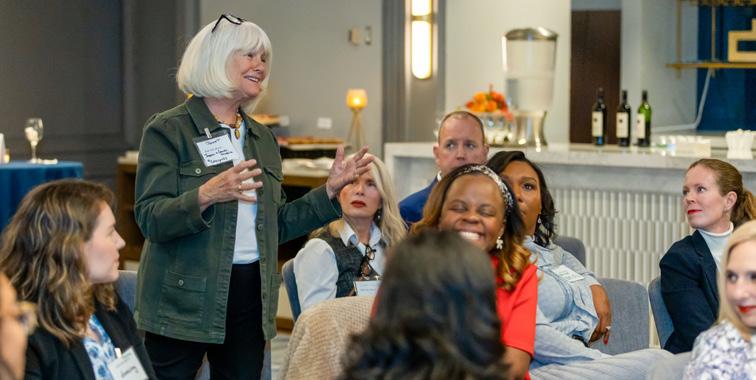










“When I was a boy and I would see scary things in the news, my mother would say to me, ‘Look for the helpers. You will always find people who are helping.’”
– Fred Rogers
A government shutdown, RIFs (reductions in force), people emboldened to lean into their worst impulses—it’s been a challenging time for all of us. It can be easy to want to back away when faced with hard things. But our team at the National Military Spouse Network doesn’t shy away from hard things or hard conversations.
To be honest, I worry that we’ve been promoting the federal government as an employer of choice for military spouses, never anticipating how vulnerable it would make them in the event of a government shutdown and unprecedented cuts to the federal workforce. I hear from military spouses who are anxious about their missed paychecks, but who also worry for their neighbors. As the concerns start piling on, it’s easy to feel demoralized and start spiraling. None of us is immune to it. What all the career coaches will tell you is that while you can’t change your circumstances, you can change the way you react to them.
I’ve found that the only thing that stops that cycle of hopelessness for me is to stop, breathe and look around to find the little sparks of goodness around us. That’s when I started noticing the quiet helpers who are stepping in to fill in the gaps. Businesses and organizations are hosting networking events and skills workshops to help those who may be out of work. Military spouses are putting together meal kits for their neighbors and others have coordinated donations to food pantries. They teach us that in times of need, there’s something we can all do to help.
It’s easy to get caught up in the desire to make a huge impact in the world around us. But that can sometimes
keep us from recognizing that it’s the accumulation of little gestures that makes the biggest impact in our local communities.
When the need is great, we can all do something to help. If you’re in a place where you can write a check to fund a food drive, great. Do it. If you don’t have the means to write a check but can donate a few hours of your time to sort donations or serve food, wonderful. Volunteer. If you are skilled in resume reviews, interview prep or social media and see someone struggling to find a job, reach out and offer them some targeted assistance. We each have unique skills and abilities that we can share to help ease someone else’s burden.
And if you’re someone who needs help, please don’t suffer in silence, thinking that other people need the assistance more than you do. Give yourself some grace and reach out for that helping hand. We have all needed help at some point in our lives, and there is no shame in asking for it.
As we head into Thanksgiving, I’m grateful for the helpers in our community. Thank you for your giving hearts and the impact you’re making.
Sue Hoppin Founder & President
National Military Spouse Network
BY JENNIFER BARNHILL, EDITOR IN CHIEF
Iam a data nerd. I won’t lie. Spreadsheets are my jam. I like writing Excel formulas and picking apart surveys that contain double-barreled questions. It is a skillset and passion I know is rare, but one I hope to share with you today.
Because if the military spouse community is going to solve the problems it faces, we need to get better at understanding the data that tells the story of our community, even if it means my resume bullet point is no longer unique. While this concept can be applied to any area, I think it’s important to understand unemployment data.
Let’s take a look at a common number that has floated around our community for decades: 20 percent.
Twenty percent is the number that comes to mind when we talk about military spouse unemployment. But what does that number mean?
To understand the 20 percent, we first need to unpack the terms used to describe employment.
• Employed: Working full- or part-time, including those who are self-employed.
• Unemployed: Not working, but have actively looked for paid employment within the past four weeks.
• Out of the workforce: Not working and not actively looking for work.
• In the workforce: Those who are employed plus those who are unemployed.
• Marginally attached: Not in the labor force, tried to find work within the past 12 months, but have not looked for work within the past four weeks.
• Discouraged worker: Subset of “marginally attached” workforce. These individuals indicate some type of discouragement about their job prospects, but show a desire to work.
When we are told that 20 percent of military spouses are unemployed, it’s easy to assume that 20 out of every 100 military spouses don’t have jobs and are looking for work. But that’s not how employment math works. Unemployment percentages only count those who are “in the workforce”—that is, people working or looking for work. Those out of the workforce aren’t considered unemployed.
For instance, if 70 percent of military spouses are in the workforce (employed + unemployed) and 30 percent are out of it, then 20 percent of 70 is just 14 percent of the total population.
We refer to 20 percent unemployment instead of 14 percent because it is the national standard set forth by the Bureau of Labor Statistics. This allows us to compare apples to apples when we talk about unemployment numbers.
But we aren’t apples. Our community doesn’t fit the mold, so why are we held to the same standard?
There are roughly 340 million people living in America. However, 21 percent are under 18 and 18 percent are of retirement age. Counting only those actively looking for work makes sense—but it becomes less meaningful when only 66 percent of Americans are in what we might consider “prime working age” (16 - 65 years)
Those not working and not looking are able to indicate one of the following five reasons they are not working: retirement, school attendance, home responsibilities, illness/disability or “other”.

• For ages 16–24, the top choice is school.
• For women 25–54, it’s home responsibilities.
• For men 25–54, it’s illness/disability.
• For 55+, it’s retirement.
The BLS uses large buckets because they simplify national labor force participation. These buckets are seen as choices made by individual Americans.
But military spouses are different. We aren’t children or retirees. The vast majority fall into the prime working age category. We can’t get married
if we’re not adults. And although the DoD doesn’t break down military spouse ages and just lumps them into 41+, we can assume that because service members retire before they hit retirement age, their spouses are likely under the age of 65.
We all fall into the roughly 16 percent of Americans aged 25-54 who are out of the workforce
BUT far more than 16 percent of military spouses are out of the workforce. In 2024, 30 percent of military spouses were out of the workforce—nearly double the national rate.
Source: DoD Survey Data. To Access Aggregated Source Data: Click HERE
Source: 2024 Active Duty Spouse Survey (ADSS)
These figures are not calculated according to the BLS standard. Rather the totals reflects the overall representation of surveyed participants separating them by employed, unemployed and out of the workforce (vs. grouping unemployed and employed as “in the workforce”).


Source: Bureau of Labor Statistics Definitions
The age group with the highest likelihood of reporting discouragement is those ages 18-24 They are roughly three times more likely to be “discouraged” than other groups.
But when military spouses are out of the workforce, we are not categorized as discouraged workers in surveys. We are simply put into our “out of the workforce” bucket, out of sight, out of mind. It is seen as our choice to be out of the workforce.
But military spouses know it is hardly a choice.
So, why do surveys only highlight those who are in the workforce (employed and unemployed)? It hasn’t always been this way. In the 90s, the DoD asked military spouses if they were working or not. Those who were not were asked if their skills were marketable. Nonprofit surveys used to ask spouses without jobs if they wanted to work.
While the civilian workforce has tracked discouraged workers for decades, our community has not.
If we don't understand the data, we don't know how to identify when the data no longer serves the population it measures. What may have started as a well-meaning simplification to make it easier to
compare us to civilians, is no longer working. But solutions are right at our fingertips. We can create better measures. Now is the time we MUST widen our aperture and stop obsessing over military spouse unemployment at the expense of those who are discouraged and on the outskirts of the labor market.
By focusing on unemployment—a measure that overlooks anyone who has stopped looking, or who is in the middle of a PCS move, who has not yet had time to look—we ignore the spouses who have become discouraged, overwhelmed or are otherwise unable to look for work in the timeframe they are surveyed.
We know that some spouses “choose” to be out of the workforce to care for children because their income would be less than the cost of child care. Some families are stationed in employment deserts. Some take time between PCS moves to get everyone else settled into school, medical appointments and new routines before sending out resumes. These groups are seen as not wanting to work because the buckets that we are using to measure their experiences are not nuanced enough to understand the reality of what is seen as a “choice”.
It is time to focus on better understanding the discouraged workers in our community and learn what it would take to encourage their employment. We have tried to fix unemployment for half a century without success. It is time we start measuring the decisions and circumstances that push military spouses out of the workforce.

Jennifer Barnhill is the author of The Military Stories You've Been Told and the Ones You Need Hear, freelance journalist and the host of Military Dinner Table Conversations , a monthly reverse town hall with military families. She is the 2025 Armed Forces Insurance Navy Spouse of the Year, a 2023 Bush Institute StandTo Veteran Leadership Program Scholar, the editor-in-chief of the National Military Spouse Network ’s Career Connections Magazine and the military spouse liaison on The League of Wives Memorial Project
BY RONA JOBE
Iremember preparing for the conversation with my boss, asking to work remotely while my partner served in the U.S. Foreign Service in Brazil. I spent hours crafting my message and building a case to sell myself to the company. Luckily, it worked out for me. But once I arrived in Brazil, I realized that I was the exception. Most spouses are forced to leave their jobs with each move.

PCS orders feel like a full stop on careers. Military and foreign service spouses are talented and adaptable, but the job market rarely meets them with the same flexibility. Fortunately, that’s starting to shift. Through my participation in the Military Spouse Employment Partnership (MSEP) and Hiring Our Heroes over the past three years, I have observed a notable and encouraging increase in the number of businesses actively working to hire and retain military spouse talent. Employers are beginning to see that supporting military spouses isn’t a favor—it’s a smart strategy. When military spouses remain in the workforce, employers retain talent and families gain stability. Everyone wins.
Military spouses face distinct and persistent challenges in the workforce: frequent relocations, disrupted networks, licensure issues, child care gaps and other obstacles that make career progression extremely difficult. Today, there are approximately 561,000 active-duty military spouses and 341,000 selected reserve spouses in the U.S.
According to a 2023 report by the U.S. Department of Defense , 62 percent of active-duty military spouses have a college degree— including 32 percent with a bachelor’s and 18 percent with an advanced degree. Military spouses are educated and capable, yet 21 percent of active-duty spouses remain unemployed—nearly four times the national average
Those who do find work often experience underemployment, wage gaps or roles that don’t match their experience or area of expertise. PCS moves are particularly disruptive and research shows that the odds of being unemployed are doubled within 12 months of a PCS.
Each move often means starting over: new applications, new industries and new networks. The constant reinvention can be exhausting and discouraging. For military spouses, flexibility isn’t a perk—it’s a necessity for building sustainable, fulfilling careers. As you prepare for your next PCS, ask yourself:
What does flexibility look like for me?
It might mean remote work, adjusted hours or shifting to a 1099 or contractor role. However,
by identifying and advocating for these options, we can build careers that move with us, no matter where duty calls.
Offering flexible roles to military spouses is both the right thing and a strategic advantage for employers. It boosts retention, enhances diversity and taps into a ready, capable talent pool. I know this conversation feels daunting, but it’s also an opportunity to showcase your value and advocate for a winwin solution.
Why You, as a Military Spouse, Are an Asset:
• Skilled & Adaptable: Military spouses are highly educated and thrive in fast-paced, changing environments.
• Diverse & Innovative: We bring fresh perspectives that drive creativity and problemsolving.
• Culturally Responsive: With cross-cultural experience, we excel at communication and collaboration.
• Strong Work Ethic: We bring leadership, discipline and a deep sense of commitment to the team.
• Retention-Ready: Flexibility leads to loyalty. When employers support us, we’re more likely to stay.
• Reputation Boost: Hiring and retaining military spouses enhances their brand and attracts valuesaligned talent.
Effectively Framing Your Request:
• Lead with Value: Emphasize your impact and how flexibility ensures continued strong performance.
• Be Clear and Specific: Define the type of flexibility you need—remote work, adjusted hours or project-based roles.
• Propose a Pilot: Suggest a 60- or 90-day trial with clear goals to demonstrate success and ease concerns.
• Explore Alternatives: If relocation affects your current role, propose transitioning to a 1099 or part-time contractor role.
• Remind Them of the Cost: Replacing talent costs 50–150 percent of a salary—retaining skilled team members like you is a smart investment.
Bottom line: Flexibility isn’t a favor—it’s a strategic advantage.
Unfortunately, your company may still not allow flexibility. Here are some important steps you can take to make the most of this relationship:
• Secure References: Ask for a letter of recommendation and a LinkedIn endorsement before you leave.
• Leverage Resources: Utilize programs such as the Spouse Education and Career Opportunities and Hiring Our Heroes . These organizations offer career coaches, mentors and resources that can help with resume reviews, job searches and career planning.
• Activate Your Network: Let colleagues and mentors know you’re open to freelance or remote work.
• Explore Freelance Platforms: Sites like Upwork or Fiverr can help you find shortterm roles that match your expertise.
Work flexibility isn’t just a personal need—it’s a necessity for career longevity and a strategic advantage for employers who want to retain top talent and build more inclusive, resilient organizations.
Whether continuing with your current employer, pivoting to freelance work or starting a new role at your next duty station, your skills, experiences and adaptability are assets. With the right approach and support, you can PCS without pressing pause on your career.

Rona Jobe is the CEO of LVL-Up Strategies. Founded in 2020, LVL-Up Strategies is an SBA 8(a) certified minority-owned, woman-owned small business based out of Arlington, Virginia. Specializing in helping small businesses grow to their potential, LVL-Up offers its clients strategic advisory, operations design and implementation, marketing plans and execution and business development guidance. LVL-Up’s staff consists of military and Foreign Service spouses who are offered an opportunity to build sustainable careers while serving the United States all over the world.
Every morning, coffee in hand and one eye half-shut, I open my Gmail account, bracing for news updates that seem to scream from my monitor. I find less and less endurance to digest headlines warning of sweeping reductions in force (RIFs) affecting civilian government employees. These faceless people are co-workers and friends of mine I’ve met over the past 13 years. I’m not sure I have the emotional capacity to absorb it all anymore. It’s just too personal. I am sure most military spouses in the federal workforce would say the same. Our networks are tight, our reach is wide and we all know now: military spouses and veterans, who give so much, are not being spared.
Federal agencies are dealing with their unique cocktail of directives, eliminations and reorganization orders—impacting over a quarter of a million people and their families. Policies are unclear. Legal resistance is fierce.
I have cried for friends who have been caught in the middle of this tug-of-war. Friends ordered back to physical offices even though their active-duty soldier is serving our country thousands of miles
(Full interview conducted in July 2025)
Branch of Service
away. Retired service members who joined the State Department, giving up everything to serve abroad, only to be cut off from the health insurance their kids desperately need. Friends confused by mixed RIF notices—some fired without warning and were escorted out of buildings, and others were told to come back, only to be let go again. The emotional toll is real. So is the burnout.
Six months ago, I started collecting military spouse RIF stories. Back then, major news outlets were covering the chaos, but since then, military spouse stories have been drowned out by bigger headlines about injunctions, lawsuits and Supreme Court rulings. With my own work challenges and my own employment worries, I shelved the project.
A few weeks ago, I couldn’t help but ask myself, “What happened to the spouses I connected with six months ago?” So much has changed in six months, yet so much is still the same. I decided to circle back around and see:
What is happening now? Has trust been restored? If not, will it ever be?
Let’s see what a few military spouses have to say:
(First interview February 24, 2025)
(First interview February 24, 2025)
(First interview February 24, 2025)
Total Federal Service 5 ½ years; 19 years w/ prior service 5 years 3 years 5 years
Performance Appraisal 4s and 5s 5s and exemplary PMAPs
Fully successful for FY24
My scores have been 3.4, 3.7 and 4. I didn’t get an appraisal for my position (agency left off for fear of retribution), but my division chief wrote a letter stating my performance was excellent.
Awards (including time off and monetary awards)
(Full interview conducted in July 2025)
Multiple awards, most notable including department-wide innovation awards, rising star award and Deputy National Coordinator of Health IT Award
(First interview February 24, 2025)
Multiple awards, most notable including Civilian of the Quarter for her squadron and group and the Civilian of the Year.
(First interview February 24, 2025)
She received an award with a bonus for creating a tool that enhanced the customer experience. The award praised her creativity and initiative, stating her work exceeded expectations
(First interview February 24, 2025)
$1,000 monetary award from her agency for performance and team contributions; several other monetary awards and Civilian of the Quarter awards previously.
Reason Given for Termination
Impact (Financial/ Emotional)
“Entire office RIF’ed. Tenure, performance and veteran’s preference were not considered.”
Advice for Military Spouses Facing Similar Issues
“We took a $90,000 pay cut, causing significant financial and emotional stress. My husband is 100% disabled, as well as my son. I had the stable job and benefits.”
“According to OPM guidance, my probationary period meant my appointment wasn’t final. The agency said my performance didn’t show [that] I should stay in the civil service, so they removed me.”
“My husband is overseas, so he can’t help with day-to-day life. He sends money, but it’s draining our savings. I have three kids, one a toddler… Now, I’m job-hunting for something that balances daycare costs and school schedules, hoping to find work soon to stay afloat.”
“Because I was on probation, the agency said my performance did not demonstrate that my further employment would serve the public interest.”
“The same generic termination as everyone else: not demonstrating ‘performance’ to the agency.”
“We can no longer afford a home that fits our needs near Scott AFB, where we’re PCSing…My income loss has drastically affected our budget, and I’m worried about basic expenses like groceries.”
“We can’t pay our bills on my husband’s Army income alone. Finding work is hard because of our upcoming PCS. Emotionally, it’s been rough—this was the first time I was truly proud of my work. Being fired so suddenly still makes me cry.”
“Document everything, keep working hard and fight for your rights as a military spouse. It’s okay to seek help if you’re struggling emotionally.”
“Educate yourself. Don’t be passive—call your representatives, use your story, connect with others and bring awareness. This isn’t right, and it needs to be set straight. Stand up—there’s strength in numbers!”
“Keep your head up! We aren’t alone. Vent, cry, scream and embrace this rollercoaster. We are resilient, and we’ll march forward!”
“Advocate for yourself—even when you think you don’t need to. On paper, I did everything right. I took a lateral move to better my career and support a mission I believed in. I wasn’t worried about a new probationary period, because my work ethic was never in question. But now, we’ve lost everything.”
Any Updates on your RIF situation?
Did You Find New Employment?
Kim
“Fired on April Fools’ Day, locked out immediately and metro benefits gone within hours. We were left in limbo on admin leave until July 14—then suddenly told it was over. Five days later, I got a letter. Still no clarity on when my benefits end, and my severance is off by nearly $100K. HR won’t respond. I’ve filed a ticket and appealed to the Merit System Protection Board (MSPB) —others are lawyering up if they can afford it.”
“Yes, I am now a teacher. It’s a huge pay cut, but it was the best option, since government and contracting jobs are scarce.”
Adrian
“I was terminated on February 14. After about a month, I was reinstated. But as soon as I returned, “Fork in the Road 2.0” came out—another round of restructuring and potential demotions. I decided to take the offer and leave; I wasn’t going to risk being terminated again.”
Anonymous Air Force Spouse Anonymous Army Spouse
“I was offered my job back, but because of my circumstances, I took the Deferred Resignation Program (DRP). We PCSed to another base, and an unfortunate event happened, which required surgery, which meant I couldn’t work.”
“I was reinstated at my agency about a month after my firing due to a court order. It was very chaotic, and no one had clear answers for anything.”
“Yes, I went back into education and now work for a regional education service center.”
Has Your Perspective on Career Stability or Federal Service Changed?
What Advice Do You Have for Military Spouses?
“Absolutely, I thought I’d finally found a stable career where I could work for 20 years and retire. Instead, I was illegally fired, without cause, despite my military spouse preference. This should never have been possible.”
“Educate yourself on your rights, what you’re owed, so you don’t lose pension, admin leave or severance. People are fighting back, but only time will tell if justice is served for what’s been done to military families.”
“Definitely, that’s why I chose to leave. I like stability, and I no longer feel civil service can offer that.”
“I haven’t found new employment. My husband is preparing for another long TDY. I’ve been searching for jobs, but I need to finish physical therapy before I can start working.”
“It definitely has. I no longer feel government work offers the stability or flexibility I need. I don’t feel my experience was valued. I’m hoping to find another remote position, but I’m really stressed about where to even apply.”
“Yes, I did. It was hard because we were in the middle of a PCS to somewhere that does not have a lot of jobs available. I spent every day while I was let go applying to positions I could take with me when we moved.”
“Yes, it has taught me that, regardless of how hard a worker you may be, nothing is guaranteed.”
“Honestly, I’m fortunate to have found work I enjoy and stability. I just want to thank those fighting for military spouse preference and encourage them to keep up the good work.”
“Nothing is permanent—not even feeling overwhelmed or upset. Staying flexible and prioritizing your mental health helps you show up for the people who matter most. For me, that’s my kids and husband.”
“Don’t give up. It can get really dark when something like this happens, but lean into your support group, your loved ones and you’ll make it through to a brighter side.”
It's hard to read these stories. It’s even harder to do justice to the voices of the military spouses I’ve come in contact with these past six months, as well as reconnect with old colleagues. As I reached out, collected feedback and asked for a bit of bravery, I recognized in these spouses what I already knew to be true about myself.
I’m tired. I’m scared. I’m hurt.
I’m tired of trying to untangle this mess into something I understand. Tired of so much noise, wishing it didn’t take hours to sort it all out and decode the truth.
I’m scared, too. Scared that my dream of retiring at 60, with plenty of money saved to visit my grown children and give them things I never had, is slipping away. Scared that working hard and serving my country isn’t going to pay off. That the sacrifices we make will go unnoticed, unappreciated and the basic decency we count on in this country is losing value.
And honestly, I’m hurt. I feel betrayed by the leaders who’ve allowed this to happen. By government officials who can’t answer questions as to why 100 percent disabled veterans and military spouses with excellent performance appraisals are losing their jobs. I’m hurt because this shouldn’t be political, but that’s what it is. Simply having empathy for your fellow Americans, empathy for your neighbors, isn’t a priority. The priority is to justify our side and assign blame.
The New York Times recently reported that the civilian federal workforce has shrunk by roughly
12 percent—through the Deferred Resignation Program (DRP), layoffs, Voluntary Early Retirement Authority (VERA), Voluntary Separation Incentive Payment (VSIP) offers and retirements. But the real cost isn’t in the numbers. It’s the loss of trust and the unanswered questions that haunt so many military families.
There’s a code of conduct that military service members and their families take very seriously. Spouses in federal service also officially promise to support and defend the Constitution of the United States.
Is our faith in these oaths, these standards, unraveling? From my perspective, military families still honor them. But the belief that service is a badge of honor, an investment in oneself, a chance for a better hope and future—that is unraveling faster than any of us want to admit.
Once trust is broken, it’s not easily won back.
Editor’s Note: This article was written by a military spouse who requested to be anonymous out of concern for her family’s financial security. “As a military spouse with nearly 15 years of federal service, I know all too well how easily someone in my position can be identified—especially given how few of us there are at the current agency I work for. Right now, this is the only way I can safely share these stories.”

BY ANDREA SINGSAAS
Bullying begins quietly.
Getting passed over for a project; a meeting happens without an opportunity for input; the tone in the room shifts when you speak. Most people brush it off and tell themselves not to take it personally, but over time, that uneasy feeling grows.
Don’t run to HR at the first sign of tension. Workplace bullying can be addressed without HR intervention if it’s recognized early and addressed with integrity.
Bullying in the workplace isn’t a single rude comment or a clash of personalities. It’s a pattern of behavior—intentional or not—that repeatedly undermines, excludes or discredits another person. It erodes trust, confidence and psychological safety over time.
And it’s not just in your head; workplace bullying is real. Nearly 23 percent of workers worldwide report experiencing workplace bullying or harassment, and only 37 percent of employees strongly agree they’re treated with respect, according to Gallup. If you feel intentionally disrespected at work, you’re not alone.
While you can’t control someone else’s behavior, you can control the clarity with which you see it and the integrity with which you respond.
Documentation isn’t about building a case; it’s about clarity. Carol Bowser, JD, president of Conflict Management Strategies, said taking the time to document the facts will keep you from reacting in the moment or overreacting. This will minimize inflated or inflammatory rhetoric.
Next time you’re documenting what you suspect is bullying, ask yourself these three questions:
• What happened?
• What was the impact on the work?
• What pattern am I seeing?
Bowser reminds professionals, “Not everything that feels unfair is.” By grounding yourself in facts, you slow down your thinking and (likely) protect your credibility.

Carol Bowser, JD
Not every situation needs HR intervention, but you don’t have to navigate workplace bullying alone. Seek mentors or peers who can offer perspective, not commiseration.
Trusted counsel helps you identify whether you’re facing miscommunication, a culture mismatch or genuine misconduct. Be careful that “talking it through” doesn’t turn into gossip. Constructive dialogue seeks clarity and action; gossip seeks validation.
Taking the high road isn’t the same as surrender; it’s a strategy. Purposeful composure is a sign of strength and may be the key to maintaining your professional credibility.
For instance, if someone tries to undermine you in a meeting, don’t match their energy. Redirect their energy and reiterate with extreme candor. It might sound like this, “That’s one perspective. Here’s what I’m seeing based on the data.” No attitude, no apology. The high road isn’t about being nice, it’s about being in control.
The high road is not about silence or avoidance; it’s about choosing your ground carefully. When you respond with steadiness instead of emotion, you shift the power dynamic and protect your credibility in the process.
Taking the high road also sets a tone for others. People remember the leader who stayed calm when things got messy. They trust the
colleague who could disagree without disrespect.
You train people how to treat you. Silence signals acceptance and allows poor behavior to grow roots. If it feels safe, request a private conversation focused on outcomes, not blame.
Bowser advises, “In difficult conversations, slow the exchange. Ask questions and stay calm.”
Clarity and calm are far more persuasive than emotion. One confident conversation can reset expectations and redefine what’s acceptable. Bowser adds, “Clarity is power. Choose your words and actions carefully.”
The moment you speak up with composure, you teach everyone what leadership looks like.
Workplace bullying doesn’t thrive in isolation; it survives in cultures where it’s tolerated or ignored. Culture begins with leadership.
Bill Barrington, ACC, executive coach and owner of Barrington Leadership Group, believes leaders carry the first and greatest responsibility for the environment they create. The expectations they model and the behaviors they allow communicate far more than any policy ever could.
“Leaders set the culture of their organization by what they say, what they do and by what they tolerate or ignore,” Barrington says. “Their silence sends the loudest message.”

When leaders choose silence, you still have a choice: protect your integrity, use your voice and decide if that’s a place where your values can thrive.
Sometimes formal action is needed. Connect with HR when patterns repeat, your performance or health declines or behavior crosses ethical or legal lines.
If you do need to contact HR, come prepared. Bring documentation, speak in specifics and focus on business impact. Bowser notes, “HR is there to uphold standards, not fix people. Employees who arrive with facts and calm confidence are more likely to be heard.”
Lead with facts, not frustration, and you protect both your credibility and your career.
Addressing unhealthy behavior early, and with composure, builds trust, not tension.
Barrington explains, “When a professional handles conflict with clarity and composure, they reinforce a culture of trust and psychological safety. Ignoring it creates a reputation no one wants.”
Handled well, these moments define leaders more than any title or award.




Workplace bullying will never disappear entirely, but how you respond determines its power. Whether you’re the one experiencing it or the one responsible for preventing it, clarity and composure are your greatest tools.
Every workplace has friction. The skill is choosing when to speak up, how to do it with intention and what to do next once you’ve been heard.
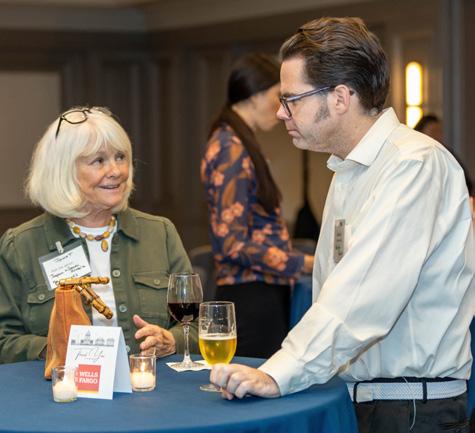



Andrea Singsaas is an award-winning executive coach, leadership coach and keynote speaker who helps high-performing professionals and organizations move from chaos to clarity. As the founder and CEO of The Tyne Group , she specializes in executive coaching services, leadership development and strategic consulting for executives, entrepreneurs and mission-driven teams.

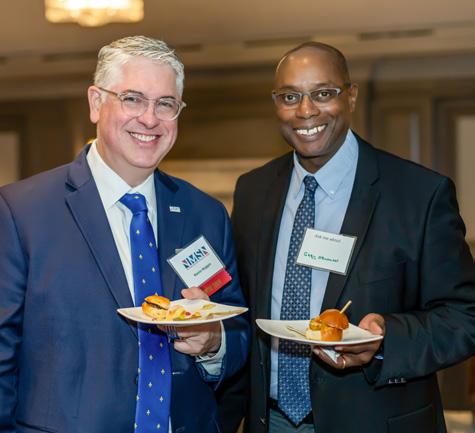


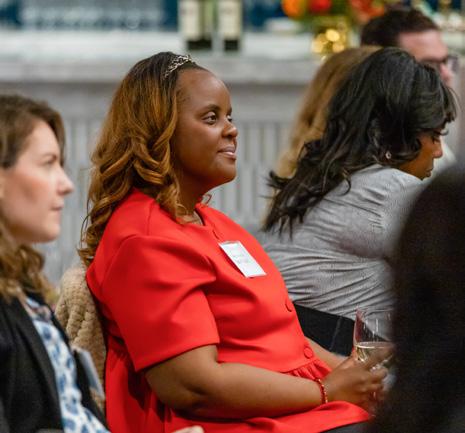






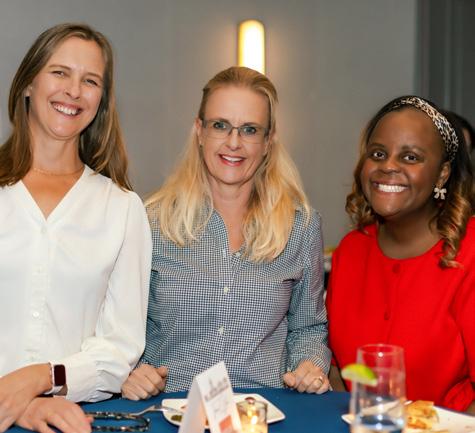



We’d like to talk with you about career opportunities at Wells Fargo!
Scan the QR code to learn more and join the Military Spouse Talent Community.

BY ERIN HODGKINSON, STYLE ADVISOR
As the days get shorter and the air turns crisp, fall and winter fashion is leaning into one big theme: textures and movement. Think soft knits, cozy layers, swishy fabrics and pieces that feel just as good as they look. This season’s trends are all about clothes that move with you—whether it’s a flowing midi skirt, a fur collar or tactile fabrics that beg to be touched. This fall’s cool weather mood is feeling comfortable and free as more relaxed fits oppose the last few year’s neutrals and minimalistic vibe.
This season, rich shades of brown are taking over—brown is the new black. Deep mocha, espresso and chocolate tones are replacing black as the goto neutral, bringing a softer, warmer edge to cold-weather looks. Going monochromatic? The key is texture. Mix suede with knits, leather with wool or satin with shearling to keep it visually interesting and elevated. And don’t be afraid to add a little print. Cow print is still having a moment, and classic polka dots are are back on the scene to offer a playful contrast against all that earthy richness.




Brown may be a neutral, but this season it's friending unexpected colors. One of the freshest ways to wear it? Pair it with a color that’s anything but neutral—and nowhere near brown on the color wheel. Think rich chocolate with vibrant cobalt, cool chartreuse or violet. The key is choosing two hues of equal saturation so they balance, not clash. It’s an easy way to make a statement without leaning into the obvious. This isn’t about contrast for shock value—it’s about creating harmony through confidence.



This season, accessories aren't just finishing touches—they're styling tools with a purpose. Belts and scarves are breaking free from their usual roles and showing up in unexpected places, especially layered over shirts and blazers instead of within the traditional belt loop on a pant. Cinch a crisp button-down at the waist with a chunky suede belt or over a blazer to add shape. It's a simple switch that instantly updates a classic silhouette and adds intentionality to an otherwise relaxed look.

Erin Hodgkinson is a globally certified stylist with experience working on live TV and content shoots. She is currently a Styling Specialist for an Incubator Team.
BY JULIE PROVOST
We all have a story to tell. Whether you have been through a medical crisis, the loss of someone important to you or experienced something unique, such as military life. We all have something to share. You can create an online brand and community by telling your story and sharing it with the world.
In 2009, we were stationed in Germany, and my husband, who was on active duty in the Army, was deployed to Iraq. I was bored and ready for something new, but we still had a few more months to go before he would return and we would start the process of PCSing back to the States. That was when I created my first public blog .

I chose a military spouse theme and started sharing about life as an Army spouse. Deployments had been quite difficult and I knew I couldn’t be the only one who felt that way. I started sharing my story and experiences, and grew an online brand and community. My blog has become a place where people can get advice, hear stories and remember they are not alone in their military spouse journey.
Turning something personal into an online brand and community can be more complicated than simply sharing your story. If you want to grow, you will need to plan. Here are a few things to consider when turning your story into an online brand and community.
You will need to figure out what your core message is going to be. It could be awareness of a medical issue or a trauma you have experienced. It could also be a platform for others to share their similar stories. Figure out what you want your message to be.
Why do you want to share your particular story? Why take it public? Figure out the purpose and why you want to turn it into a brand or community. Why is your story something you want to share?
If you want to turn your story into a brand or community, you must decide what to share and what is too personal. You don’t have to share every little detail, but you do need to be comfortable being public about certain things. If you share anything about the military or your life as a military spouse, you must remember OPSEC (Operational Security) and PERSEC (Personal Security). Not everything is shareable.

When you have a public brand, you may receive various comments, not all of which will be positive. Keep this in mind when deciding how much to share.
Eventually, you will start building your community around your brand. This could be on any social media channel, within a website, blog or podcast. Some of this will happen organically, but it’s a good idea to have a place where people can find one another. You can create a private group, allowing others to share parts of their stories and get to know people who share similar interests.
As you grow your brand, you must decide how and whether you want to monetize it. Even if you have no plans to do so, someone could contact you and ask if you’d like to do a sponsored post, host an ad or run a giveaway. There are many different options, from selling your own product to ads and sponsorships.
It’s essential to figure out what you feel comfortable doing. Yes, you’re turning your story into a brand, but it’s still a brand that can be turned into a business.
Transforming your story into a brand and community isn’t always easy. It will take a lot of emotional effort to share your story and invite others to share it with you. But turning your story into a personal brand can be a significant step in entrepreneurship and a crucial career move for your future.

Julie Provost is a content specialist, writer, blogger and owner of Soldier's Wife, Crazy Life, a support blog for military spouses. She lives in Tennessee with her veteran husband, three boys and one puppy dog. She loves to read, watch a fun TV show or movie and hang out with family.

With the fall season arriving in northern Virginia, we have a visual reminder that as our surroundings change, so do we, at least on the outside. We break out our sweaters and light jackets in the latest autumn trends. We go from apple picking to visiting pumpkin patches and following the famed “Apple Cider Donut Trail”. I bet you’re picturing what this season looks like for you.
Underneath these seasonal adjustments, we’re still the same as we were in the summer. We’re still recognized by those who know us. So, how do we do this in our professional life? How does our audience still recognize us through our professional pivots? Being consistent is being authentic.
As a creative person, I wanted to try everything in my social media posts and website - the equivalent of having purple highlights in my hair one week and chopping it off the next. It took more time than I had in a day, and confused both my current clients and potential ones as to what I offered. It’s only been in the past year, with the
A s k M e A b o u t
BY TRISH ALEGRE-SMITH
help of my team—especially my remote assistant, Greer—that we finally have consistency in what we share. This proves that it’s never too late to start.
Why is this important?
Consistency in your visual imagery is a way of showing your reliability, your ability to deliver what you promise. To help us stay on track, we created a shared inspiration board in Canva that showed our brand guidelines: logo, colors, fonts and samples of images. This made it easier for our team to understand what we were trying to convey.
Visual images should highlight who you are, who you like to work with & what you like to do.
• Prioritize your audience: We like helping people shine in their best light by capturing them doing what makes them “light up” from the inside. Not only do we show this in our client images, but also in spotlights of each member of our team.
• Tell a story about what you do: You can use your photos and video clips to show
what you do by following a storytelling format. Think of your story as showing how you create a bridge from a problem to a solution with what you do. For our team, behind-the-scenes video clips and photos of us at work effectively convey this story to our audience.
• Adjust as Needed: We make small changes as we learn what works best for us and what our target audience responds to, but our core brand, values and message always stay the same.
Focus on quality over quantity.
• Don’t Put Your Business Last: Since we’re always the ones behind the camera, we’re guilty of not setting aside time to take our own branding photos and videos. We now include behind-thescenes photos and videos in our shot list for every event and branding session we do for our clients. We also include a branding photography session as part of our quarterly in-person team meetings.
• Planning Matters: We maintain a social media calendar; we plan for two social media posts a week, one newsletter a month and update our online portfolio at least once a quarter.
• Don’t (Always) Follow Trends: Trends are fun, but we recommend trying them out if they’re authentic to your brand and messaging. We ask ourselves, “Does this clearly communicate who we are or what we do?”
The saying “less is more” does apply to visual branding. However, don’t be so afraid of getting the right shots that you can’t generate enough visual images to use in all of your promotional work. Just as consistency is authentic, so is imperfection.

For over a decade Trish AlegreSmith managed multimillion dollar aircraft maintenance and weapons development programs for the United States Air Force. She brings her unique skill set to the NMSN team—turning her experience in evaluating contract proposals and contract surveillance into an asset that supports social enterprises and small businesses in pursuit of their goals. She currently freelances as a proposal specialist and writer and runs her own business as a professional photographer in the Washington, D.C.-area. Trish is also an Air Force spouse, mom of three school-aged children and teaches Filipino folk and Polynesian dancing to share the diversity of Asian and Pacific Islander culture and its impact on the American identity.
Fall is my favorite time of year. The air is cool and crisp, cinnamon and spice find their way onto every menu and— whether we admit it or not—we start to think about what we’re grateful for.
What am I grateful for? The people who show up, over and over again, when I need them most.
If you’re a military spouse, you know what I mean. Every PCS, you start over. New faces, new routines, new opportunities—and lots of discoveries. For years, I thought networking meant putting on a smile, shaking hands with just the right amount of grip and eye contact and “selling” myself. But that version of networking never felt real to me, and I’d bet a Starbucks Pumpkin Spice Latte that it doesn’t feel real to you either. I’m old enough now to understand lasting connections, the ones that show up over and over again, are the ones that start at unit barbecues, messy playdates and authentic conversations that require legs tucked on a couch with a wine glass in hand.
For the past few years, I have worn three hats. First, as a federal employee who supports supervisors with human resources transactions, second, as the SFRG Leader of 2-14 Cavalry on Schofield Barracks and third, as the Hui
BY TRACI MCCOMBS
O’Na Wahine 2nd VP and wine club leader. Through my employment and volunteer experiences, I have discovered that the deciding factor in successful networking that leads to the right job opportunities is authenticity.
I have four tips to share when it comes to authentic networking.
The best opportunities don’t come from LinkedIn or a perfectly orchestrated elevator pitch. They come from real conversations, and real conversations happen when you get involved! Through real and honest conversations, I discovered a neighbor who was a nurse needed support navigating confusing federal salary tables. I had her come over, and I explained the rules regarding pay. Once I learned more about her specific situation, I pointed her in the right direction to research the topic even further. I also provided advice on what questions to ask the hiring manager prior to her accepting any job offer.
I also befriended our chaplain’s wife after a fun game night at my house. I discovered she was a teacher looking to transition into the federal government and wanted to apply to a specific position posted by the Department
of Education. I helped her create a federal resume and also explained the application process on USAJobs, which can be very convoluted and difficult.
Both of these spouses trust me as a reliable source for federal human resources information, and I truly enjoyed supporting them in their career aspirations. Will it pay off in the future? Of course it will, and in so many ways, it already has.
As the SFRG Leader for 2-14 Cavalry, I loved building community. I leaned into my strength of organizing and hosting events. We had a wildly popular Halloween trunk-or-treat, my husband and I hosted a huge ugly Christmas sweater party and I jumped into planning a ball to make a memorable night for soldiers and spouses. These may seem like a waste of time and money, but these “extras” build trust and create lasting connections.
But what if you are struggling with your volunteer opportunities? What if nothing feels right?
I’ll be the first to admit—fielding questions from military spouses wasn’t an initial strength. Instead

of taking random phone calls that left me scrambling to answer complex questions on the spot, I asked people to email me their questions so I could take my time to research the right answer or find a contact who knew the answer. That simple shift made a world of difference for me.
Trust me, it’s not about self-promotion; it’s about showing up where you’re strongest and navigating your struggles with grace. Just let your talents be known, and they will ripple outward into your community.
Here’s a lesson I learned the hard way: If you’re good at something, or just plain love it, let people see it.
When conversations about work or culture pop up (and they always do), be ready to clearly and authentically share what you bring to the table. For me, it’s wine. So, for two years, I led the Hui O’Na Wahine spouses’ wine club. I quickly became known as the “wine lady” around base. I can’t tell you how many spouses have asked for my recommenda-
tion on food and wine pairings, where to purchase wine or advice on which wines to showcase at their events. Eventually, these wine chats led to deeper conversations about work, employment, unemployment and career aspirations.
Last year at a wine event, I met a woman who makes custom wood ornaments. I gladly shared her work, as did many other spouses! She is now heavily connected to the spouse community on post, and her business is thriving.
Say it out loud. You never know who’s listening or who has that perfect connection you need.
This time of year, gratitude is everywhere. But don’t just write it in a journal—let it change how you show up. Write a thank-you card to the spouse who connected you to someone in your career field. If you love to garden as a side gig, share clippings with your neighbors and offer tips on how to make it grow. Think about seeds you can plant in others, through the natural gifts that you have. You’d be amazed at how
much you can discover about someone when the agenda is authentic.
My career in the federal government started 13 years ago with a simple compliment. I sat next to a girl in my master’s program who drove a white Mercedes SUV. I simply said, “Oh my gosh, I absolutely love your car.” That conversation led to other conversations about my frustration with the job market, having zero work experience and believing HR was my ticket as a military spouse to career stability. Four months later, that same girl gave my contact information to a hiring manager at the National Institutes of Health (NIH). A few months later, I was hired as a Human Resources Specialist Intern.
Authentic networking isn’t a strategy; it’s just being yourself, showing up and filling in the gaps with your gifts. In this season of gratitude, remember: dependable and authentic people stick together. So, let your true colors show, and watch how the right people—and opportunities—fall into place.

As a Talent Management Specialist, Traci McCombs oversees the Corporate Recruitment and Global Recruitment functions in Office of the Assistant Secretary for Health (OASH) to attract, engage and inspire diverse and qualified talent to join one of their many program offices. Traci manages candidate sourcing strategies through innovative approaches and technology. She is passionate about finding highcaliber talent through real-time and personal communications. Traci has over 12 years of experience in federal human resource programs.

I don't think the market has impacted my career as much as others, as I was stationed OCONUS in 2008, working for MWR. However, I have noticed that moving up into senior leadership is harder in more competitive job markets, as the competition is stronger and my nontraditional resume can't always compete with those who have more experience and are willing to be underemployed.

The civilian job market hasn’t directly impacted my job search because I’ve been working in federal service for over a decade. But there’s been a huge shift in job security and office stability. Nearly half my office was RIFed this year, and administrative roles like mine now feel more vulnerable than ever before. I’m grateful for the remote flexibility, especially as an activeduty Army spouse, but it does limit which career fields I can enter and caps my advancement since supervisory positions require in-person presence. Overall, the environment feels very unstable, and I'm constantly trying to figure out how my skills could be transferable, especially in today's job climate.

The civilian job market forced me to prove my worth twice as hard for half the credit. Employers love to talk about supporting military spouses until it’s time to actually hire one. Suddenly flexibility looks like a liability, and resilience gets rebranded as being “unsettled.” After countless applications that went nowhere, I stopped apologizing for a resume that tells the truth. I adapted because I had to. And I built a business because I refused to keep waiting for permission or acceptance.
At LVL-Up Strategies, we’ve witnessed firsthand how much potential is lost when flexibility isn’t part of the employment equation. Military and foreign service spouses bring diverse, global experience and resilience to the workforce, but they need employers who are willing to think beyond the traditional 9-to-5 office model. The more the civilian job market embraces remote, results-based and project-driven opportunities, the more it will unlock the talent of these incredible communities.

The civilian job market hasn’t directly impacted my career in human resources and organizational development, but I’ve seen its effects on others in strategic and leadership roles. Talent managers and senior leaders now expect candidates to show measurable outcomes that reflect teamwork, problem solving and alignment with organizational goals. This shift has challenged many experienced professionals to translate their work into clear stories of impact, collaboration and performance in a data-driven hiring environment.

As a small business owner this current job market hasn’t impacted my job search or business in the way one would assume. I have had more requests for headshots and personal branding photos than usual as people try to make their LinkedIn profiles and online presence stand out professionally.


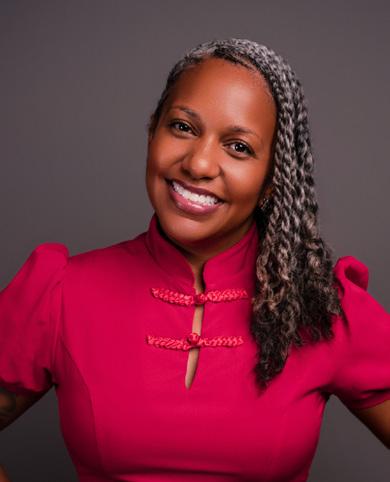



Shifting Priorities: How Changes in Military Spouse Support Impact Opportunities and Funding
Michael Kelly
Strategic Integrator
Session 2
The Soft Power of Consistency: Small Habits, Big Shiftsg
Stephanie Singleton
C-IAYT Clinical Yoga Therapist
Session 3
Turning Challenges into Opportunities: Building a Career Through Community Impact
Nichole Lovejoy
Chief Advancement Officer, New River YMCA
Session 4

Data-Driven Storytelling: How Military Spouses Can Use Evidence to Amplify Their Impact
Jennifer Barnhill
Freelance Journalist and Researcher


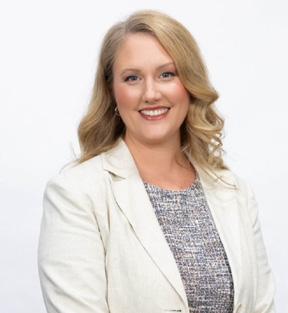


Session 5
From Burnout to Bliss
Vimbo Watson, M.Ed.
Speaker
Click HERE to watch the sessions
Session 6
Panel Conversation: Weathering the Storm: Strategies for Career Stability in Uncertain Times
Moderated by Sue Hoppin
National Military Spouse Network


Session 6:
Panel Conversation:
Weathering the Storm: Strategies for Career Stability in Uncertain Times
Session 7

Safari to EntrepreneurshipCreating Your Journey
Amy Millican Owner, Flyga Twiga™ LCC
Session 8
Military Spouse, Powerhouse: Unlocking Your Professional Superpowers
Andrea Sivanich
Founder of Civonic


Session 9
The Power of the Pause: How Military Spouses Can Pause, Plan and Proceed With Clarity
Dr. Kay Williams
Leadership Coach
Session 10
Your Story, Your Power: Advocacy Skills for Military Spouses
Maureen Elias
National Veteran and Military Family Advocate



